#Bimal Roy
Explore tagged Tumblr posts
Text


Madhumati (1958) | dir. Bimal Roy
Title Cards
#madhumati#madhumati 1958#bimal roy#indian cinema#hindi cinema#bollywood#cinema#movies#films#world cinema#classic cinema#old bollywood#cinematography#1950s#south asian cinema#asian cinema#title cards#indian movies#bollywood movies#hindi movies#aesthetics#aesthetic#screencaps#indian films#bollywood films#hindi films#classic bollywood#cinephile
20 notes
·
View notes
Text


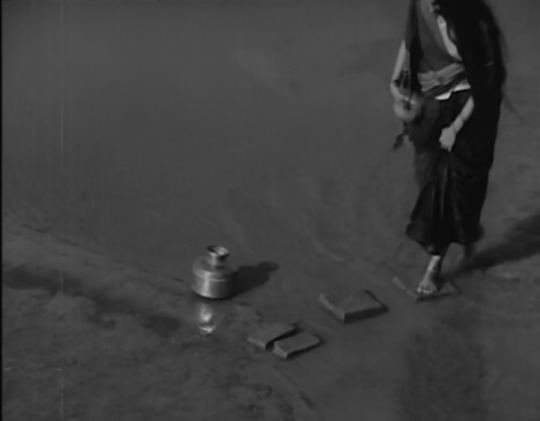
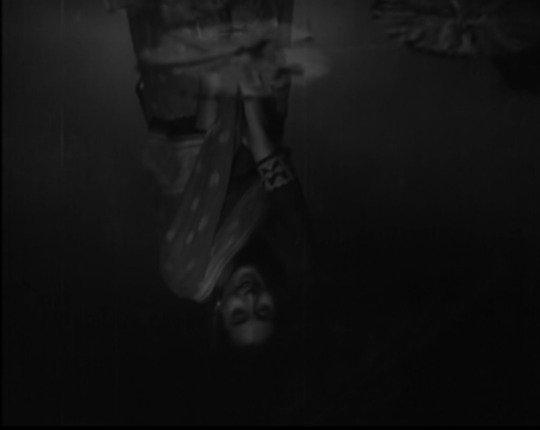

Bandini (Bimal Roy, 1963)
32 notes
·
View notes
Text
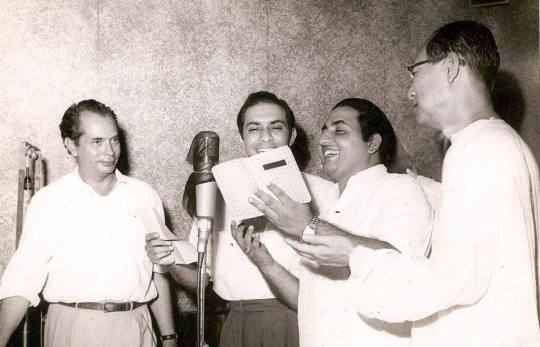
Tributes to legendary singer #TalatMahmood on his 26th death anniversary (May 9, 1998).
This photo features #BimalRoy, Talat Mahmood, #MohammedRafi, and #SachinDevBurman during the recording session for the movie 'Devdas' (1955).
What are your favorite Talat Mahmood songs?
10 notes
·
View notes
Text

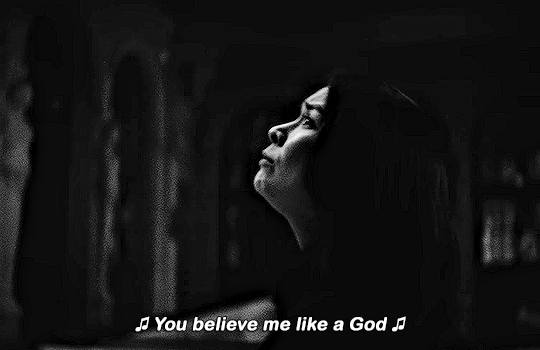
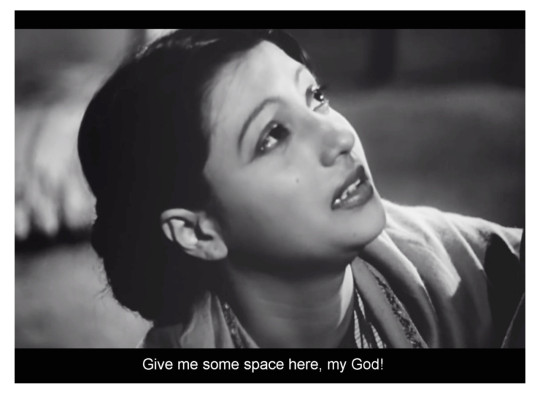


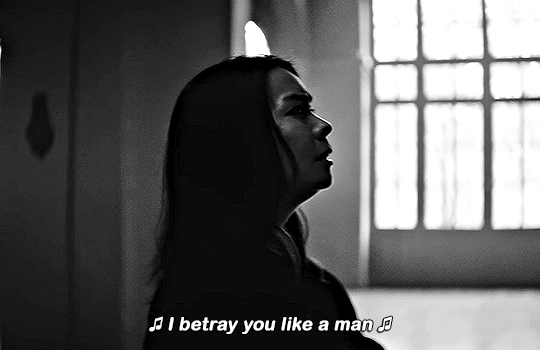
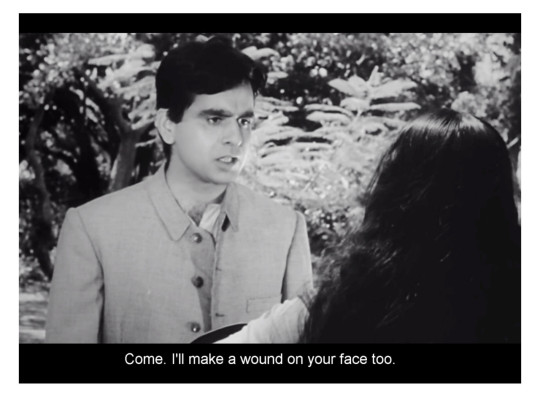
#devdas#mitski#Dilip Kumar#Suchitra Sen#i'm your man#devdas (1955)#Bimal Roy#indian movies#indian literature#south asian movies#south asian literature#pathetic attempt at web weaving :(
5 notes
·
View notes
Text
Karan Deol and fiancé Drisha Acharya spotted on lunch date, see pics inside | Hindi Movie News - Times of India
Sunny Deol’s son Karan will soon be tying the knot with his longtime girlfriend Drisha Acharya. The duo already got engaged a few months ago, the date coincided with grandparents Dharmendra and Prakash Kaur’s anniversary.The two will reportedly be tying the knot between June 16-18. The couple, who has been dating for six years now, recently stepped out for a lunch date. The duo twinned in black…

View On WordPress
0 notes
Text
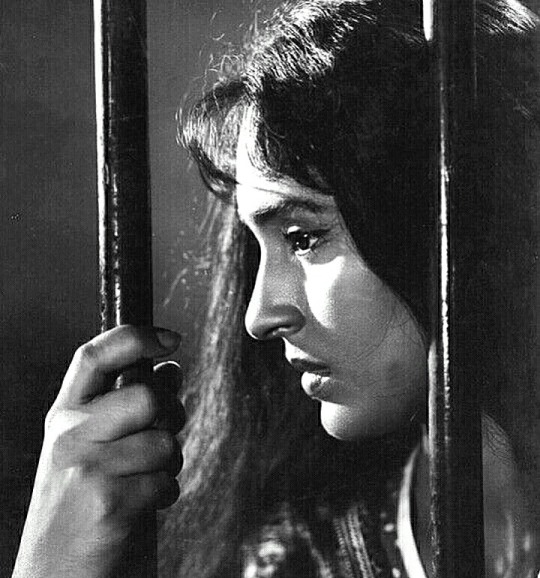
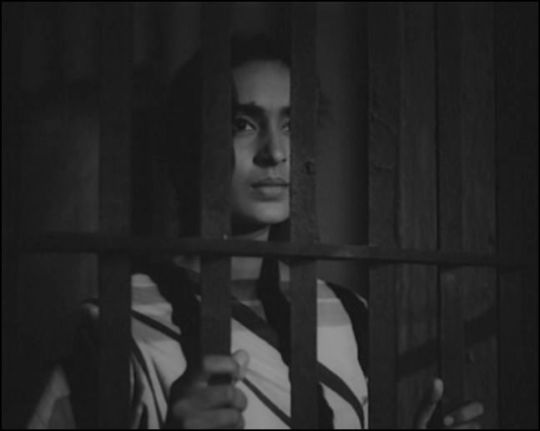

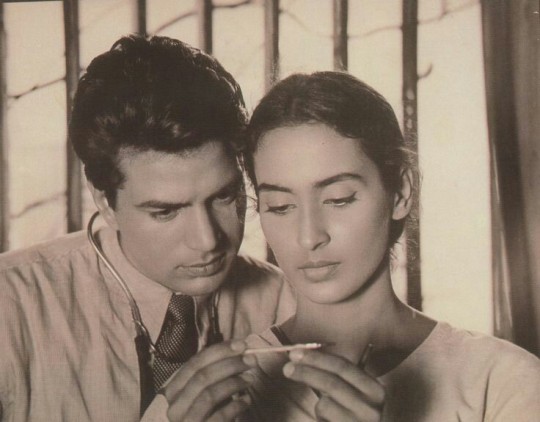
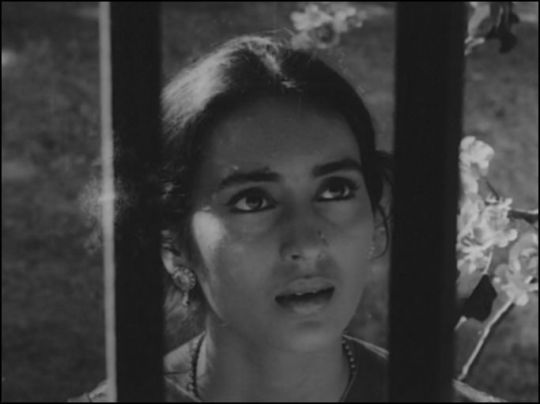
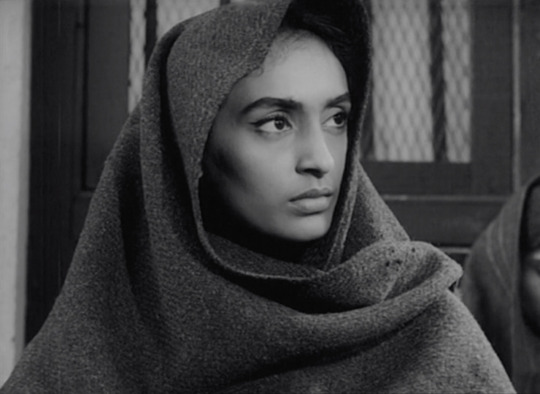


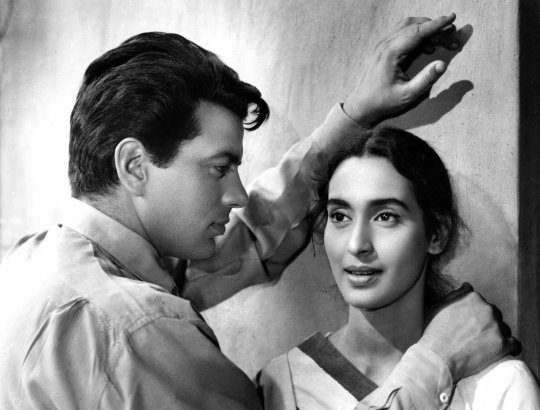
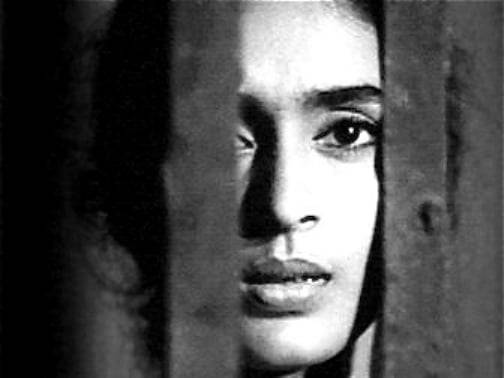
Bandini (1963) dir. Bimal Roy
14 notes
·
View notes
Note
Suchitra Sen's impending loss is tearing my heart out. How can Bengali cinema's greatest female icon lose out in round 2 itself? I won't let her go down without a fight!
Suchitra Sen entered films as a married woman and a mother which was highly unusual for not just Bengali cinema, but for the whole of Indian cinema as well. In an age when actresses tried their best to hide the fact that they were married and had children, Suchitra Sen was not afraid to swim against the tide.
Hailing from erstwhile East Bengal (present day Bangladesh) she left with her family for present day West Bengal in India following Partition in 1947 and she had to adapt to the dialect and pronunciations used in Bengali films made in India.
Many talk about Suchitra Sen's quiet dignity on screen, but summing it up so briefly does her injustice. She played melodramatic without resorting to melodramatic acting. Her screen presence was so heartbreakingly real and didn't have the theatrical nature that was associated with Indian cinema of that era.
Starting from the 1950s, Bengali rom coms were all Suchitra Sen and Uttam Kumar. They had incredible chemistry on screen. But Suchitra Sen was determined to prove that she was not just Uttma Kumar's other half on screen but a capable and frankly good actress in her own right. So, in the 1960s she went on to do many women centric films opposite other lead actors (such as Bikash Roy and Soumitra Chatterjee), thus giving us some gems of Bengali cinema like Uttar Falguni (1963) and Saat Pake Bandha (1963), the latter won her the best actress award at the Moscow International Film Festival making her one of the first Indian actresses to win an International award.
In Uttar Falguni (1963), she plays a woman who flees an abusive marriage and becomes a courtesan to support her daughter. In Saat Pake Bandha (1963), she plays a young woman whose marriage disintegrates due to her mother's interference. In both these films, Sen doesn't need words, her loss, her pain, her anger are all etched on her face in different moments but never does it fall to melodramatic theatrics.
In Devdas (1955), Bimal Roy's classic production of Sarat Chandra Chattopadhyay's celebrated novel, she plays the role of Paro and is in my opinion the best of the many Paro's I've seen on screen in adaptations ranging from 1936 to 2002 and beyond.
In Aandhi (1975), she played a politician estranged from her husband dealing with a clash of love and career.
Suchitra Sen was a classic Bengali beauty and an icon, not just of Bengal but of India as a whole
https://www.youtube.com/watch?v=kSV2xoFQCJ8&list=PLA_A9T_Uj7IxMGFk5Pif7gjJR46v8FRPZ&index=5
Suchitra Sen vs Cyd Charisse
The linked video:
youtube
59 notes
·
View notes
Text
DAY 5754
Jalsa, Mumbai Nov 18/19, 2023 Sat/Sun 1:13 AM
Chhat Puja (Pratihar Sashthi/Surya Sashthi) Sunday, 19 November
Birthday - EF Rubina Mulchandani ; Ef Pravin Ahuja (noida) 'poet sahab' Sunday, 19 November ... birthday greetings to you and the affection f the Ef family .. ❤️
.. that strain again .. and again .. and again ... at this hour of having just finished work .. no work no play .. yes .. began at 7 am and now in completion .. that is and be the essence of day of us that work .. no work no play .. without it , like the sun never came out .. clouded in its translucent obliquity .. 'abrupt and angular but the very' ... aahh forgot those precious words of Hrish Da's brother on set on one of his films .. 'soul of magnanimity and rectitude' .. found it .. yaaaayyyy !
abrupt and angular but the very soul of magnanimity and rectitude ..
.. he had described the character I played in 'NamakHaram' .. Hrishi Da's film with Rajesh Khanna .. an Indian Becket .. that incredulous film with Peter O' Toole and Richard Burton , playing King and his confidant a commoner , almost .. christenned in the Court much to the dislike of the Church Archbishop .. but what an envious casting and performance abilities of these two giants .. and what a story .. ably adapted by Hrishikesh Mukherjee in the local version of a business tycoon, his empire and his dear friend, whom he has trusted to death and who turns the tide when he discovers the inappropriateness of the labour force that works for his friend's factory and the continued conflict that arises between these two inseparable friends ..
.. the description of the character .. but how mutedly significant in the environment of the day, when the surya devta plays truant ..
o .. lost my thought process .. in the wonderment of the days of this shoot at Mohan Studios .. now sold and converted into a multi storied real estate monstrosity , like many others .. never a word or thought of the massive creativity it encountered during its functionality .. Bimal Roy and his genius, Hrish Da, Prakash Mehra and their huge structured films and so many many others .. lost and gone to the concrete .. but in the memories of archives , now finding it difficult to survive ..
but life and work as I said needs to go on .. each day and enthusiastic run for the glory of the audience- the ones that made and make you !!
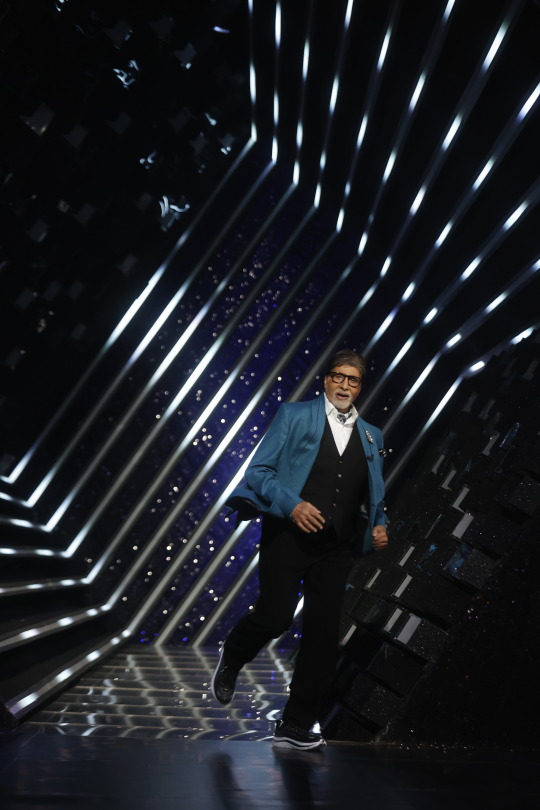



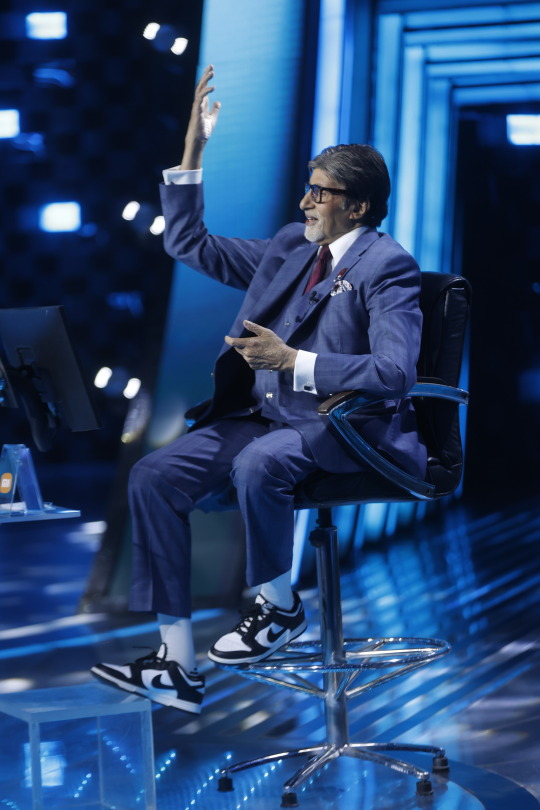
i retire ..
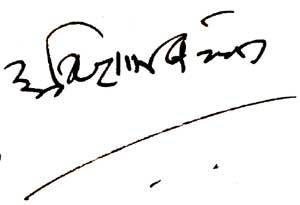
Amitabh Bachchan
115 notes
·
View notes
Text
Exploring the Vibrant World of Hindustani Cinema: A Kaleidoscope of Culture, Art, and Storytelling
Hindustani cinema, often referred to as Bollywood, is a vibrant tapestry of culture, art, and storytelling that has captivated audiences worldwide for decades. Rooted in the rich traditions of Indian culture, Hindustani movies offer a unique blend of melodrama, music, dance, and larger-than-life narratives that have left an indelible mark on global cinema. In this article, we embark on a journey to explore the essence of Hindustani cinema, delving into its history, evolution, and enduring appeal.
Origins and Evolution: The roots of Hindustani cinema can be traced back to the early 20th century, with the screening of India's first silent feature film, "Raja Harishchandra," directed by Dadasaheb Phalke in 1913. This landmark moment marked the beginning of a new era in Indian filmmaking, paving the way for the emergence of an industry that would eventually become one of the largest in the world.
In the following decades, Hindustani cinema underwent a rapid evolution, embracing sound technology with the release of "Alam Ara" in 1931, India's first talking picture. This innovation revolutionized the medium, allowing filmmakers to incorporate dialogue, music, and song into their narratives, shaping the distinctive style of Bollywood movies that we know today.
The Golden Age: The post-independence period witnessed the emergence of what is often referred to as the Golden Age of Hindustani cinema. Filmmakers like Satyajit Ray, Raj Kapoor, Guru Dutt, and Bimal Roy crafted masterpieces that not only entertained but also challenged societal norms and explored complex themes with depth and nuance.......watch more.
Movies such as "Pather Panchali," "Awaara," "Pyasa," and "Do Bigha Zamin" garnered critical acclaim both at home and abroad, earning Indian cinema international recognition and respect. These films transcended linguistic and cultural barriers, resonating with audiences around the world and cementing the legacy of Hindustani cinema on the global stage.
The Rise of Bollywood: The 1970s and 1980s witnessed the rise of the Bollywood masala film, characterized by its formulaic blend of romance, action, comedy, and music. Filmmakers like Yash Chopra, Manmohan Desai, and Subhash Ghai created larger-than-life spectacles that catered to the masses, introducing iconic characters, memorable dialogues, and timeless songs that became ingrained in the collective consciousness of Indian audiences.
During this period, stars like Amitabh Bachchan, Dharmendra, Sridevi, and Rekha rose to superstardom, becoming cultural icons whose influence extended far beyond the silver screen. Their larger-than-life personas and charismatic performances defined an era and contributed to the enduring popularity of Bollywood cinema.
Global Reach and Recognition: In recent years, Hindustani cinema has experienced unprecedented growth and recognition on the global stage. Films such as "Lagaan," "Slumdog Millionaire," and "3 Idiots" have garnered widespread acclaim at international film festivals and award ceremonies, showcasing the diversity and talent of Indian filmmakers to audiences around the world.
The success of these films has not only opened doors for Indian cinema in international markets but has also sparked a renewed interest in Indian culture and storytelling on a global scale. With streaming platforms like Netflix and Amazon Prime offering a vast array of Bollywood movies to a worldwide audience, Hindustani cinema has never been more accessible or influential.
Challenges and Opportunities: Despite its global success, Hindustani cinema continues to grapple with challenges, including piracy, censorship, and the dominance of formulaic storytelling. However, filmmakers are increasingly pushing boundaries and exploring new avenues of creativity, tackling taboo subjects, and experimenting with narrative techniques to engage audiences in fresh and innovative ways.
Moreover, the rise of independent cinema and digital platforms has provided a platform for emerging filmmakers to showcase their talent and reach audiences directly, bypassing the traditional studio system. This democratization of filmmaking has led to a proliferation of diverse voices and perspectives within the industry, enriching the cinematic landscape and offering new opportunities for artistic expression.
The Future of Hindustani Cinema: As we look to the future, the possibilities for Hindustani cinema seem limitless. With advancements in technology, changing audience preferences, and a growing global market, Indian filmmakers are poised to continue pushing boundaries and redefining the cinematic landscape.
From small-budget independent films to big-budget blockbusters, from traditional storytelling to experimental narratives, Hindustani cinema remains a dynamic and evolving art form that reflects the complexities and contradictions of Indian society. As long as there are stories to be told and dreams to be shared, the magic of Bollywood will continue to captivate audiences around the world, bridging cultures and inspiring generations to come.
Conclusion: In conclusion, Hindustani cinema occupies a unique and cherished place in the pantheon of global cinema. From its humble beginnings over a century ago to its current status as a cultural juggernaut, Bollywood has captivated audiences with its colorful characters, melodious music, and larger-than-life narratives.
As the industry continues to evolve and adapt to changing times, one thing remains constant: the enduring appeal of Hindustani cinema as a celebration of life, love, and the human experience. Whether you're a casual moviegoer or a die-hard fan, there's something magical about Bollywood that transcends borders and brings people together in joyous celebration of the art of storytelling.
2 notes
·
View notes
Text
I watched Madhumati (1958) last night. I can't believe it took me so long to watch this movie given its legacy.
And I enjoyed it very much.
I've never been a Dilip Kumar fan but after this... I get it. I really do.
I have been a Vyjayanthimala fan and she's delightful, as always.
I had no idea Ritwik Ghatak wrote the script? And you see it. The "raja" wields his unearned wealth and power like a bludgeon. He's an entitled, lecherous, boorish thug who has no respect or consideration for those he considers his social inferiors.
He both admires and resents the hero for his ability to stand up to him.
The raja's corruption has tainted his staff at the timber mill which is the economic backbone of the estate.
The supervisor takes a cut from the meagre earnings of the daily wage workers. The foreman hides discrepancies in the accounts. And they're in conflict with the local Kumaoni people.
Right off the bat, the foreman and an assistant warn our hero that the locals are all thieves. But they're the only thieves we encounter.
And all of this is just the background to the central storyline, which is a romance. A good one!
Anyway, I get the Madhumati hype. And I get why Bimal Roy's daughter accused Om Shanti Om of plagiarism. OSO walks a thin line between referencing Madhumati and basically having a near identical climax.
(I personally do think OSO is a solid tribute to not just Madhumati, but a lot of Bollywood storytelling conventions, people, incidents, and more, and I'd let it go.)
Also, what a bananas good soundtrack. Salil Chowdhury and Shailendra casually landing basically every song.
If you enjoy old fashioned Bollywood entertainers, I think you should deal with the grainy film and sound, and watch Madhumati.
5 notes
·
View notes
Text
20 decade Of Indian Cinema: Greatest Actors and Actresses.
*Rare clipping* 💓
*Raj Kapoor, Dev Anand, Nargis, Nirupa Roy, Balraj Sahani, Bimal Roy* in the capital city of Tbilisi, Georgia in 1954...Vintage video...
Also see rare footage of *Putin's father Vladimir Spiridonovich Putin with Raj Kapoor*.
6 notes
·
View notes
Text


Vyjayanthimala in Devdas (1955)
| dir. Bimal Roy
#devdas#devdas 1955#vyjayanthimala#bimal roy#indian cinema#hindi cinema#bollywood#cinema#movies#films#old bollywood#world cinema#classic cinema#1950s#cinematography#south asian cinema#asian cinema#indian movies#bollywood movies#hindi movies#indian films#bollywood films#hindi films#cinephile#india#indian actress
20 notes
·
View notes
Text

Remembering Hindi & Bengali cinema actor Abhi Bhattacharya on his 31st death anniversary (11/09/93). He was a renowned actor in both Hindi and Bengali film industries. He gained fame for his performances in iconic movies from the 1950s and 1960s, including titles like Yatrik (1952), Jagriti (1954), Anuradha (1960), Subarnarekha (1965), and Amanush (1975). Over a career spanning four decades, he appeared in over 150 Hindi films and 21 Bengali films. He had the privilege of collaborating with some of India's most distinguished filmmakers, such as Ritwik Ghatak, Guru Dutt, Bimal Roy, and Satyen Bose. What are your favorite Abhi Bhattacharya films?
3 notes
·
View notes
Text
"The Evolution of Desi Cinema: From Classic Bollywood to the Rise of Indie Filmmaking"

Introduction:
Desi cinema has undergone a remarkable transformation over the years. From the golden age of Bollywood with iconic stars like Raj Kapoor and Amitabh Bachchan to the explosion of independent filmmaking and regional cinema, Indian films have evolved in ways that mirror the changing social, cultural, and political landscapes of the country. In this blog post, we’ll take a look at the key phases in the evolution of desicinemas and explore how it has transformed into a more diverse and complex medium for storytelling.
The Golden Age of Bollywood (1950s–1970s):
The golden age of Bollywood marked a period of immense creativity and storytelling innovation. Directors like Guru Dutt, Raj Kapoor, and Bimal Roy created some of the most beloved classics in Indian cinema, with films like Pyaasa (1957), Shree 420 (1955), and Do Bigha Zamin (1953). These films often dealt with social issues like poverty, class disparity, and the challenges of post-independence India.
The 1960s and 1970s saw the rise of the "angry young man" genre, with Amitabh Bachchan becoming the quintessential star of the era. Films like Zanjeer (1973), Deewaar (1975), and Sholay (1975) became monumental successes, blending action, drama, and romance with strong social commentary.
The Masala Era and Commercial Cinema (1980s–1990s):
In the 1980s and 1990s, Bollywood underwent a transformation with the rise of the "masala" film—highly commercial, formulaic movies that combined elements of drama, romance, action, and music. This era also saw the emergence of major stars like Shah Rukh Khan, Salman Khan, and Aamir Khan, who would define Bollywood cinema for decades to come.
The 1990s, in particular, marked a period of significant change, with the liberalization of the Indian economy bringing a new wave of technology and a growing middle class. Movies like Dilwale Dulhania Le Jayenge (1995) and Kuch Kuch Hota Hai (1998) became massive hits both domestically and internationally, solidifying Bollywood’s place in the global entertainment industry.
The Rise of Independent Cinema (2000s–Present):
While Bollywood remained dominant, the 2000s also saw the rise of independent cinema in India. Filmmakers like Anurag Kashyap, Vishal Bhardwaj, and Zoya Akhtar began creating films that broke away from the conventional norms of mainstream cinema. Movies like Dev.D (2009), The Lunchbox (2013), and Gully Boy (2019) received critical acclaim for their realistic portrayal of complex characters and stories.
The digital revolution has also played a significant role in the evolution of Desi cinema, with the advent of platforms like Netflix, Amazon Prime Video, and Hotstar making it easier for independent filmmakers to reach global audiences. These platforms have allowed for more experimental and diverse content to thrive, with films exploring a wide range of genres.
The Impact of Regional Cinema:
Parallel to the rise of independent films, regional desicinema has also been experiencing a renaissance in India. The success of films like Kumbalangi Nights (2019), Super Deluxe (2019), and Jersey (2021) has brought regional languages and stories to the forefront of Indian cinema. Regional filmmakers are exploring themes that are often more grounded and relevant to local cultures.
Conclusion:
Desi cinema has come a long way, from the golden age of Bollywood to the diverse and innovative films being made today. It has witnessed the rise of new stars, directors, and industries, and it continues to adapt to global trends while retaining its unique cultural identity. Whether it's the glitz and glamour of mainstream Bollywood, the realism of independent cinema, or the compelling narratives of regional films, Desi cinema is more vibrant than ever, and its evolution is far from over.
0 notes
Video
youtube
"BANDINI" - MOVIE REVIEW | BIMAL ROY DHARMENDRA NUTAN | A Timeless Tal...
0 notes
Text
A Dream Come True - Dharmendra by Vijay Kumar Pyarelal

About the Book
“A Dream Come True — Dharmendra” looks at the journey of the dreamer from a village. The book traces his 64-year career through his filmography and related memorabilia — right from his debut in “Dil Bhi Tera Hum Bhi Tere” (1960) till date. It talks his childhood and youth, when he nurtured a desire to become an actor like Dilip Kumar, and how he took part in the “All India Talent Contest” sponsored by Filmfare, the popular entertainment magazine from the Times of India group, in cooperation with legendary film-makers Bimal Roy and Guru Dutt who paved the way for him to get a foothold in the industry. It also charts his journey, beginning in the black-and-white era, his
struggles, hurdles, accomplishments. The book further delves into how O.P. Ralhan’s “Phool Aur Patthar” became a turning point in his career and Bollywood’s first original “He-Man“ was born. Readers will embark on a pictorial journey of the actor who gave the maximum number of Platinum, Golden and Silver Jubilees to the Hindi film world by way of his ability to move efficiently in the characters portrayed in Shola Aur Shabnam , Bandini, Anupama, Devar, Satyakam, Mera Naam Joker, Pratigya, Chupke Chupke , Sholay, Dharam Veer, Dillagi , Ghulami, Hukumat, Hathyar and many more.
The book also gives a peek into films that were never completed — “Rano”, “Samson and Delilah” , “Devdas” “Chanakya Aur Chandragupta” and “Dagdar Babu”. Then, there is “Pakeezah” in which he was replaced by Raaj Kumar on its resumption in the late sixties. About the Author
Vijay Kumar was born in a middle class family to a Postal Clerk in Agra (Uttar Pradesh) and grew up in a caring environment in Ajmer City of Rajasthan from where he did his educational qualifications. He served for thirty-seven and half years in Indian Railways at Western Railway, Mumbai and now living a happy retired life with family in Kharghar, Navi Mumbai. He had a long desire to publish a book, based on the filmography of the iconic actor Dharmendra Ji for which he shall be very grateful to his wife Mrs. Rekha Kumar and daughters Anupama and Mamta for their kind support and motivation to fulfill his desire. Shop Now on Amazon, Flipkart and BlueroseOne
0 notes